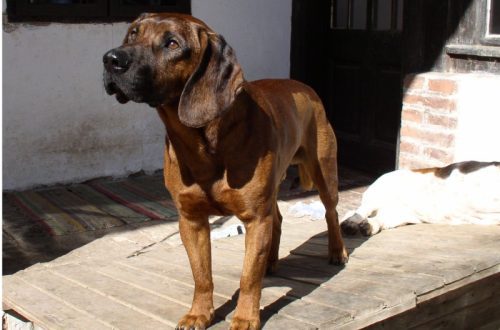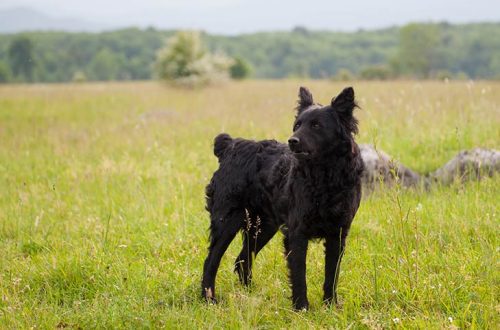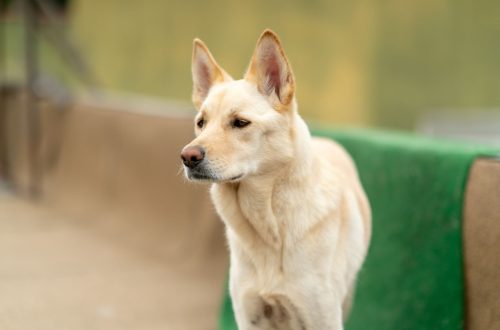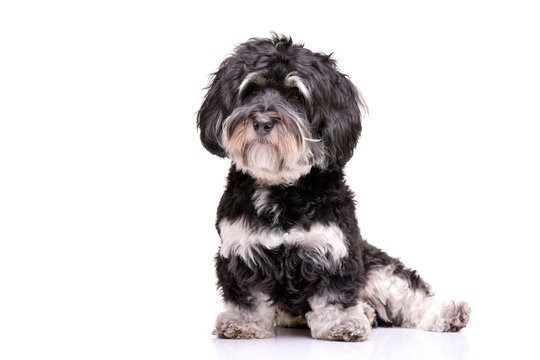
Bichon Havanese
The Havanese is a sociable companion dog from the group of lapdogs with smooth long hair.
Contents
Characteristics of Bichon Havanese
| Country of origin | Cuba |
| The size | Small, Average |
| Growth | from 23 to 29 cm |
| Weight | up to 5 kg |
| Age | up to 16 years |
| FCI breed group | Decorative and companion dogs |
Basic moments
- The breed has the status of a rare and exclusive. There is little information about her on Russian-language forums, and there are only a few domestic nurseries engaged in breeding purebred Havanese.
- The rarest color of the Havanese is white, the most common is tobacco.
- The signature feature of the breed is phenomenal contact, so the Havanese is recommended for keeping people of retirement age, as well as owners suffering from loneliness and panic attacks.
- Bichons are easy to train, so even owners with no experience with toy dogs can find contact with pets.
- Havana bichons are not sheared, but you still have to comprehend the basics of professional hair care – the animals have a mild molt, dead hairs must be combed out.
- Loneliness even for several hours for the Havanese is the strongest stress. Before taking a dog, think about who will brighten up her everyday life while you are at work.
- In the US, the Havanese has a reputation as a “signal” dog recommended as a pet for families with hearing-impaired children.
The Havanese is a funny miniature cutie that can drown in a sea of love and charm anyone who is ready to gently cuddle or scratch him behind the ear. In Russian apartments, the Cuban Havanese is still a rare guest, but this does not mean that the breed is not quoted by breeders. Simply due to historical circumstances, the animals could not break through to exhibitions and breeding lists of cynological associations for a long time. Today, the Havanese is one of the most fashionable and exclusive pets in the world, the acquisition of which will require not only a tidy sum, but also months of searching and waiting.
Character
The Havanese is an ancient island breed that became famous thanks to the Cuban nobility. In the veins of the Havanese flows the blood of a poodle and the progenitor of all modern Bichons – the Tenerife Bichon. Thus, representatives of this breed throughout their history were companions of man, salon dogs.
Havanez is distinguished by the ability to become strongly attached to the family. He is always in the same room with the owners, does not like it when someone is away for a long time, wakes up with them, accompanies him, even if it costs him sleep. Likes to be in the arms and the center of attention. These dogs are very calm and obedient with proper upbringing .
Representatives of the breed are not prone to aggression if they are socialized . Otherwise, the pet will protect its family from every stranger and animal with its main weapon – a piercing bark.
Behaviour
He treats other pets that live with the Havanese in the same house as friends, loves to play with them. Not suitable in the company of calm older dogs.
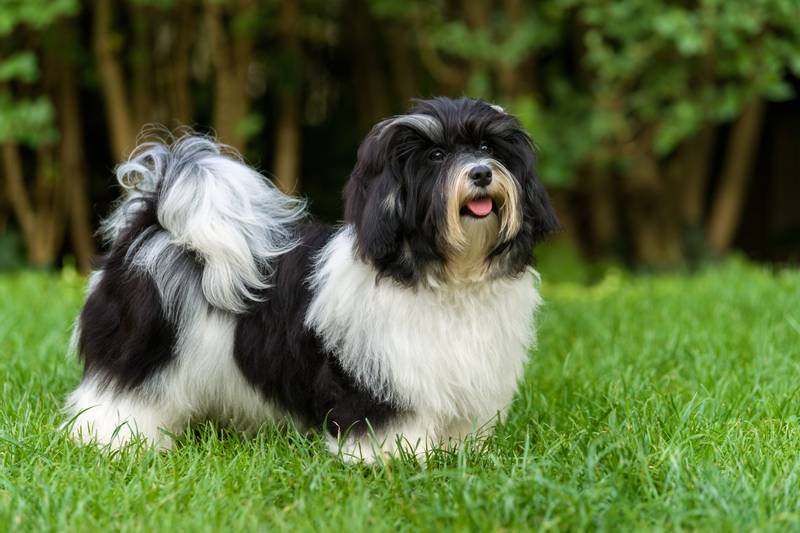
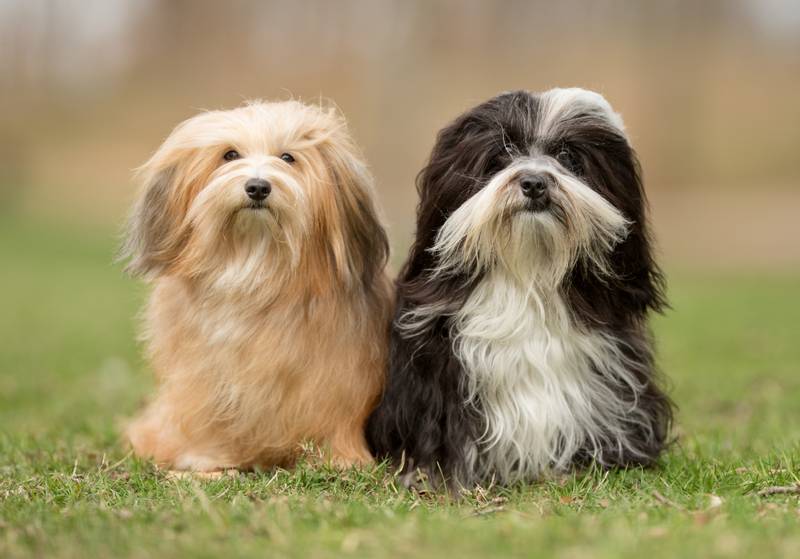
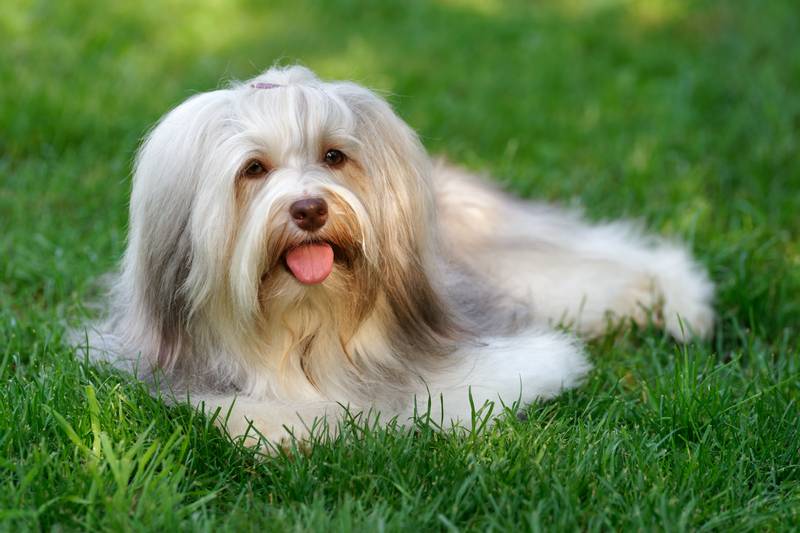
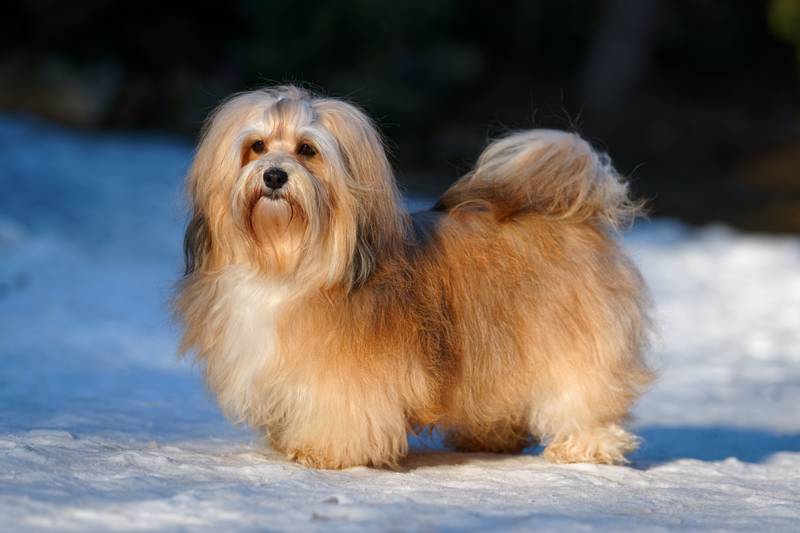
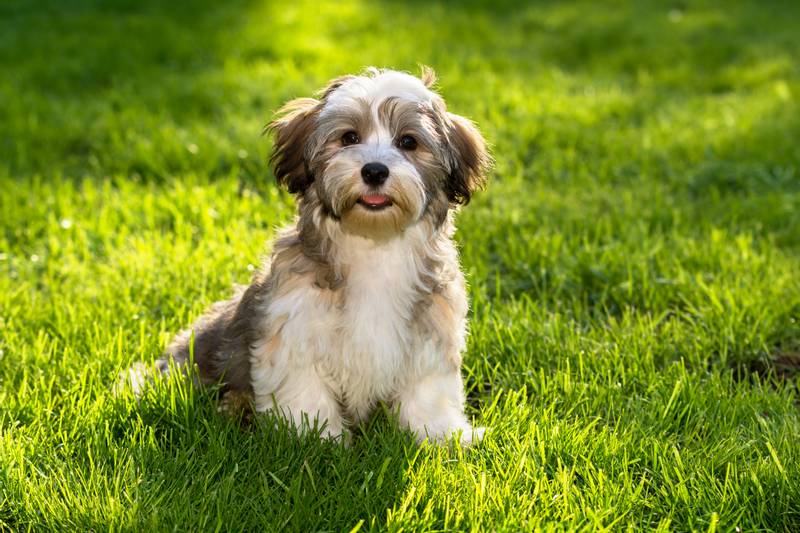
The Havanese can be taught various ball and ring games. In addition, these energetic animals run well with obstacles. In their free time, they love to be stroked and scratched. Thanks to its loving nature, this breed will feel great in families with children.
History of the Havanese breed
The Havanese Bichon is the national dog of Cuba, which began its triumphal march around the world from the Canary Islands. According to the official version, Cuban settlers brought miniature pets to Europe. However, the reverse process actually took place. In the 16th century, Spanish sailors moved to the Island of Freedom, with whom the first Bichon-like dogs sailed there.
Gradually, interbreeding with native Cuban breeds, Spanish pets took shape in a unique breed type, which the locals dubbed blanquito de la Abana – “a small white dog from Havana.” For several centuries, animals enjoyed the love of the Cuban nobility. They were settled in rich chambers, pampered in every possible way and taken abroad as a living curiosity.
Unfortunately, the original type of blanquito de la Abana has not survived to this day. In many ways, the Cuban Revolution contributed to the disappearance of the amazing breed: in the second half of the 20th century, dogs were massively exterminated simply because they were held in high esteem by the local aristocracy. As a result, of the entire clan of Havana dogs, only a few individuals survived the change of political regime, some of which were already mestizos.
There is an opinion that during the military events on Liberty Island, eleven blanquitos were smuggled from it to the United States. In any case, when American breeders began to promote the idea of \u200b\u200brestoring the breed, there were several healthy and relatively purebred sires in the country. In the 70s, the “Havaneses” living in America were infused with the blood of other decorative breeds, as a result of which the first representatives of the Havanese family were born.
Video: Havanese
Care
The coat of the Havanese Bichon requires careful care, regardless of length. Thin and thick, it tends to get tangled up in tangles that are not always easy to remove. For this reason, representatives of the breed need to be combed at least twice a week. After bathing, it is advisable to dry the hair with a hairdryer and pull it out with a comb, then in the next few days it will practically not tangle.
Dogs of this breed need to be washed every two weeks. If it is important to maintain the appearance characteristic of the breed, then you will have to wash your pet much more often.
Like all Bichons, Havanes suffer from tearing. Their eyes need to be carefully monitored. The hair on the muzzle becomes darker with age, which is especially visible on light dogs, in which it takes on a yellowish brown tint. They require a special shampoo for white dogs. In addition to regular nail clipping , Havaneses require seasonal grooming .
Conditions of detention
The Havanese can live quite comfortably in a city apartment. In this case, there should be a place nearby for active walking of the pet. It can be a park, a square, a spacious yard or a playground for dogs. In a spacious house, the havanez can run and play enough if it is allowed. Dogs of this breed cannot live in the yard.
Small dogs often find it difficult to take longer walks, so you need to be able to walk this breed three times a day. They may be short-lived, but should help the pet release energy.
Bichon breed standard
Havanez is a charming, frisky hairy man, who at first glance sinks into the soul because of his spontaneity and pretty appearance. The growth of the average representative of the breed is 23-27 cm without regard to gender. If you have a secret passion for “bag” pets, get a Havana Bichon without too much thought!
With an extensive palette of colors, these shaggy “Cubans” look like they just ran off the red carpet, slipping out of the hands of a Hollywood diva. Actually, half of the success of the breed lies in the glamorous exterior, while the rest rightfully belongs to the sociable, gentle nature of the Havanese.
Head
The length of the head of the havanese is approximately ⅓ of the length of its body. The cranium can have both slightly rounded outlines and a flattened shape. Viewed from the front or from the sides, the skull gives the impression of a square, while the cheekbones are devoid of volume. The muzzle is neither blunt nor narrowed, the stop is very light.
Teeth, lips, jaws
The bow of the jaws is scissor-shaped. A complete dentition is desirable, but missing third molars and first premolars is still acceptable. The lips of the Havanese are not fleshy, closely fitting to the gums.
Nose
Neat lobe black or brown.
Eyes
Eyes in the form of large tonsils with a black or brown rim, as well as with a dark brown iris. The Havanese has a positive-friendly look.
Ears
Covered with spectacular feathering, the ears hang along the cheekbones and have a fold that slightly raises the ear cloth. Set moderately high, the tips are rounded. Not touching the cheekbones or semi-erect ears are undesirable.
Neck
The neck of the havanese is of moderate length, the skin is well taut.
Frame
The body is strong, with a flat and slightly convex back in the lower back. The croup is characterized by a strong slope, the stomach is tucked up, the ribs are distinguished by a good bend.
limbs
The legs of the Havanese Bichon are distinguished by strong bones, a parallel set relative to each other and a general dry outline. An important nuance: the length of the forelimbs to the elbow should not exceed half the height of the dog at the withers. The paws are of an elongated type, but compact, with tightly closed toes. The movements of the dog are straight, springy and energetic.
Tail
In a thoroughbred Havanese, the tail is thrown over the back or curved and carried high. The main decoration of this part of the body is a luxurious suspension made of long satin hair.
Wool
The undercoat of the Havanese is either absent as such or poorly developed. The outer coat has a straight or slightly wavy structure and in mature individuals it can reach a length of 12-18 cm. It is forbidden to shorten the dog’s hair in any way. Exceptions are allowed for hair on the paws and head, which can hinder movement and obscure the view.
Color
The traditional suits of the Havanese are white, white-biscuit, black, brown havana, fawn of any degree of saturation, sable, tobacco, red-brown. In all types of colors, white spots and a little tan are acceptable.
Disqualifying vices
- Growth that does not fit within the limits specified by the standard (deviations within 2 cm are acceptable).
- Overshot or undershot.
- Nose with severe depigmentation.
- Entropy or ectropion. Depigmented eyelids.
- Any behavioral anomalies, including unreasonable aggression and timidity.
- Cryptorchidism.
How to choose a puppy
- The livestock of the Havanese in Russia is still small, so pay great attention to the choice of a nursery. As an option – take a ride through the Baltic countries, where the breed began to breed a little earlier.
- Try to communicate with the parent of the puppies and the rest of the babies in the litter. Pay attention to how the bichon you like behaves with fellow tribesmen – leads or obeys.
- Test puppies for friendliness. Lift the little fluffy from the floor and evaluate his actions. If the baby squeals and tries to bite you, this is a sign of an unstable psyche. Remember, the havanez is not a “servant”, and it is unusual for him to show aggression.
- Demand from the seller not only the pedigrees of the producers, but also the results of their examination for hereditary diseases. In particular, on dysplasia of the elbow and hip joint.
- Always attach importance to the appearance of the offspring. Puppies should be well-fed, with a clean smooth coat, no signs of umbilical hernia and no signs of diarrhea under the tail. Litter uniformity is encouraged, with one pup always being larger than the rest.
Havana bichon price
It is believed that the most promising Havanese should be looked for in the USA, although American breeders are not eager to give abroad puppies with excellent conformation inclinations. As for the cost, it will not be possible to purchase a purebred Havanese in the States for less than $ 1000-1500. Havanese from local kennels are cheaper – from 500$ for a pet-class puppy. It is better not to respond to offers with a lower price tag that are found on virtual bulletin boards. In most cases, they are placed by sellers of mestizos and animals without documents.



